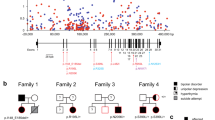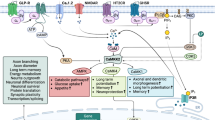Abstract
Bipolar spectrum disorders are recurrent illnesses characterized by episodes of depression, hypomania, mania or the appearance of mixed states. Great variability is evident in the frequency of episode recurrence and duration.1–3 In addition to regular circannual episodes,4 a spectrum of cycle frequencies has been observed, from the classical rapid cycling (RC) pattern of four or more episodes per year,5,6 to those with distinct shifts of mood and activity occurring within a 24–48 h period, described as ultra-ultra rapid cycling (UURC) or ultradian cycling.7–10 RC has a female preponderance, and occurs with greater frequency premenstrually, at the puerperium and at menopause.11,12 Tricyclic antidepressants and MAOIs, both of which increase functional monoamines norepinephrine, dopamine and serotonin, are known to precipitate mania or rapid-cycling in an estimated 20–30% of affectively ill patients.13–15 We have recently reported a strong association between velo-cardio-facial syndrome (VCFS) patients diagnosed with rapid-cycling bipolar disorder, and an allele encoding the low enzyme activity catechol-O-methyltransferase variant (COMT L).16,17 Between 85–90% of VCFS patients are hemizygous for COMT.18 Homozygosity for the low activity allele (COMT LL) is associated with a 3–4 fold reduction of COMT enzyme activity compared with homozygotes for the high activity variant (COMT HH).19,20 There is nearly an equal distribution of L and H alleles in Caucasians.21 Individuals with COMT LL would be expected to have higher levels of transynaptic catecholamines due to a reduced COMT degradation of norepinephrine and dopamine. We therefore hypothesized that the frequency of COMT L would be greater in RC BPD ascertained from the general population. Significantly, we found that the frequency of COMT L was higher in the UURC variant of BPD than among all other groups studied (P = 0.002). These findings indicate that COMT L could represent a modifying gene that predisposes to ultra-ultra or ultradian cycling in patients with bipolar disorder.
This is a preview of subscription content, access via your institution
Access options
Subscribe to this journal
Receive 12 print issues and online access
$259.00 per year
only $21.58 per issue
Buy this article
- Purchase on Springer Link
- Instant access to full article PDF
Prices may be subject to local taxes which are calculated during checkout
Similar content being viewed by others
Author information
Authors and Affiliations
Corresponding author
Rights and permissions
About this article
Cite this article
Papolos, D., Veit, S., Faedda, G. et al. Ultra-ultra rapid cycling bipolar disorder is associated with the low activity catecholamine-O-methyltransferase allele. Mol Psychiatry 3, 346–349 (1998). https://doi.org/10.1038/sj.mp.4000410
Received:
Revised:
Accepted:
Published:
Issue Date:
DOI: https://doi.org/10.1038/sj.mp.4000410
Keywords
This article is cited by
-
Sleep quality during euthymia in bipolar disorder: the role of clinical features, personality traits, and stressful life events
International Journal of Bipolar Disorders (2013)
-
Korrelation zwischen Risikogenvarianten für Schizophrenie und Hirnstrukturanomalien
Der Nervenarzt (2009)
-
Epigenetics in mood disorders
Environmental Health and Preventive Medicine (2008)
-
Gene–gene effects on central processing of aversive stimuli
Molecular Psychiatry (2007)
-
The catechol-O-methyl transferase (COMT) gene as a candidate for psychiatric phenotypes: evidence and lessons
Molecular Psychiatry (2006)



